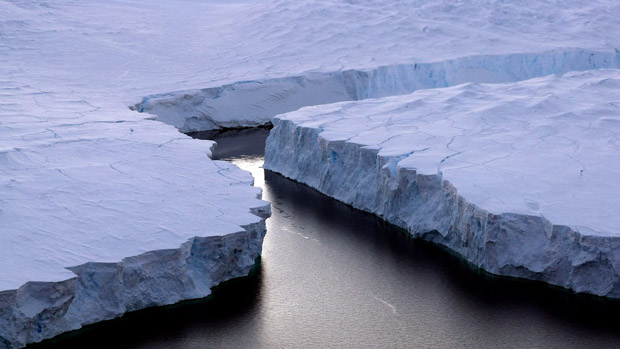Why are rising sea levels so dangerous?
New study finds that rising tides could displace hundreds of millions of people

Rising sea levels could have “profound consequences” for the planet, scientists have warned.
It has long been believed that the world's oceans would rise by a maximum of just under a metre by the year 2100. However, a new study published by Proceedings of the National Academy of Sciences forecasts that the real level may be around double that figure, due to accelerated melting in Greenland and Antarctica.
The latest research, carried out by a team of international climate academics, says such a scenario could lead to the displacement of hundreds of millions of people. “To put this into perspective, the Syrian refugee crisis resulted in about a million refugees coming into Europe,” said Professor Jonathan Bamber, one of the authors of the study.
The Week
Escape your echo chamber. Get the facts behind the news, plus analysis from multiple perspectives.

Sign up for The Week's Free Newsletters
From our morning news briefing to a weekly Good News Newsletter, get the best of The Week delivered directly to your inbox.
From our morning news briefing to a weekly Good News Newsletter, get the best of The Week delivered directly to your inbox.
“That is about 200 times smaller than the number of people who would be displaced in a 2m sea-level rise.”
The report says the world would lose an area of land equal to 1.79m square kilometres - equivalent to the size of Libya - with much of the erasure affecting important food growing areas.
The Daily Mail says the scenario would “wipe out over a million square miles of farming and other food producing lands,” while Metro says that the outcome of the predicted changes would be “catastrophic”.
Major cities, including London, New York and Shanghai would be under threat and huge areas of Bangladesh would become simply uninhabitable.
A free daily email with the biggest news stories of the day – and the best features from TheWeek.com
The researchers believe that if emissions continue on the current path then the world's seas could rise as much as 238cm by 2100. Although this would be a worst-case environmental scenarios, they believe it is a prospect worth taking seriously.
Acknowledging the chances of this are around 5%, Bamber said: “If I said to you that there was a one in 20 chance that if you crossed the road you would be squashed you wouldn't go near it.
“Even a 1% probability means that a one in a hundred year flood is something that could happen in your lifetime. I think that a 5% probability, crikey - I think that's a serious risk.”
The study suggests that there is still time to avoid this catastrophe, but only if there are major cuts in emissions across the planet.
-
 Bulgaria is the latest government to fall amid mass protests
Bulgaria is the latest government to fall amid mass protestsThe Explainer The country’s prime minister resigned as part of the fallout
-
 Femicide: Italy’s newest crime
Femicide: Italy’s newest crimeThe Explainer Landmark law to criminalise murder of a woman as an ‘act of hatred’ or ‘subjugation’ but critics say Italy is still deeply patriarchal
-
 Brazil’s Bolsonaro behind bars after appeals run out
Brazil’s Bolsonaro behind bars after appeals run outSpeed Read He will serve 27 years in prison
-
 Americans traveling abroad face renewed criticism in the Trump era
Americans traveling abroad face renewed criticism in the Trump eraThe Explainer Some of Trump’s behavior has Americans being questioned
-
 Nigeria confused by Trump invasion threat
Nigeria confused by Trump invasion threatSpeed Read Trump has claimed the country is persecuting Christians
-
 Sanae Takaichi: Japan’s Iron Lady set to be the country’s first woman prime minister
Sanae Takaichi: Japan’s Iron Lady set to be the country’s first woman prime ministerIn the Spotlight Takaichi is a member of Japan’s conservative, nationalist Liberal Democratic Party
-
 Russia is ‘helping China’ prepare for an invasion of Taiwan
Russia is ‘helping China’ prepare for an invasion of TaiwanIn the Spotlight Russia is reportedly allowing China access to military training
-
 Interpol arrests hundreds in Africa-wide sextortion crackdown
Interpol arrests hundreds in Africa-wide sextortion crackdownIN THE SPOTLIGHT A series of stings disrupts major cybercrime operations as law enforcement estimates millions in losses from schemes designed to prey on lonely users

